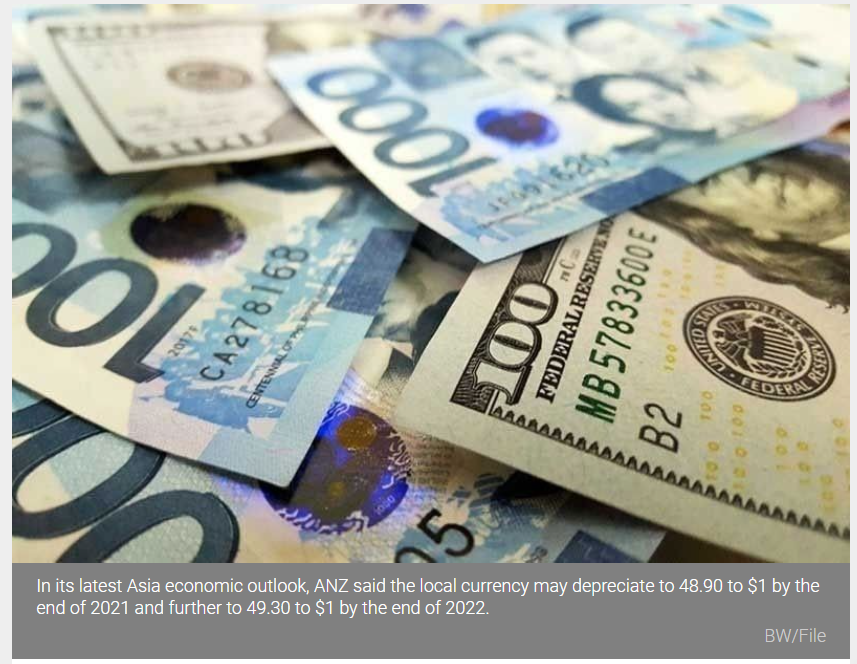Philippines: Peso may weaken further vs dollar
MANILA, Philippines — The peso may weaken further over the next two years on the back of weak domestic growth, as well as the rising US Treasury yields in the first half of the year, according to Australia-based ANZ Research.
In its latest Asia economic outlook, ANZ said the local currency may depreciate to 48.90 to $1 by the end of 2021 and further to 49.30 to $1 by the end of 2022.
“Unlike other Asian currencies, we expect the peso to depreciate over 2021. The near-term outlook is challenging due to rising US yields and a relatively weaker growth recovery in the Philippines,” it said.
ANZ said equity outflows for 16 straight months from the Philippines echo the weakness in investor sentiment.
ANZ expects a strong recovery of 7.1 percent growth for the Philippine economy this year and 6.2 percent next year after contracting by a record 9.6 percent last year due to the impact of the COVID-19 pandemic.
“Growth is expected to gather steam in the second half of this year, which will help bolster imports as well. Given peso’s trade driven nature, this will drive the currency weaker by substantially diminishing the unusually high current account surplus from 2020,” it said.
The research unit of the Australian banking group said the Philippines may post a lower current account surplus of $6.1 billion (1.5 percent of GDP) this year from a record $13.1 billion (3.6 percent of GDP) last year as global trade stalled amid the pandemic.
ANZ also said Philippine exports may grow by 4.9 percent this year and 9.9 percent next year while imports may expand by 3.4 percent and 9.4 percent, respectively for this year and next year.
“Several economic constraints, including high unemployment, excess capacity and weak credit growth, signal a lackluster recovery in 2021. The room for a rapid rebound is further hamstrung by the delayed lifting of mobility restrictions and slow progress in vaccinations,” ANZ said.
According to ANZ, the hurdles would only fade in the second half.
Among the various challenges faced by the economy, it added the weakness in the labor market and its associated impact on consumption is the most pressing.
“Weakness in the labor market has persisted: while the jobless rate has almost halved from its second quarter 2020 peak of 17.6 percent, it remains elevated by historical standards. The services sector, which employs close to 55 percent of the working population, still has considerable slack,” ANZ said.
ANZ said some economic bright spots that could partially offset substantial headwinds include the bounce back in remittances from overseas Filipino workers (OFWs) as well as robust electronics exports.
Source: https://www.philstar.com/business/2021/04/12/2090421/peso-may-weaken-further-vs-dollar


 Thailand
Thailand




